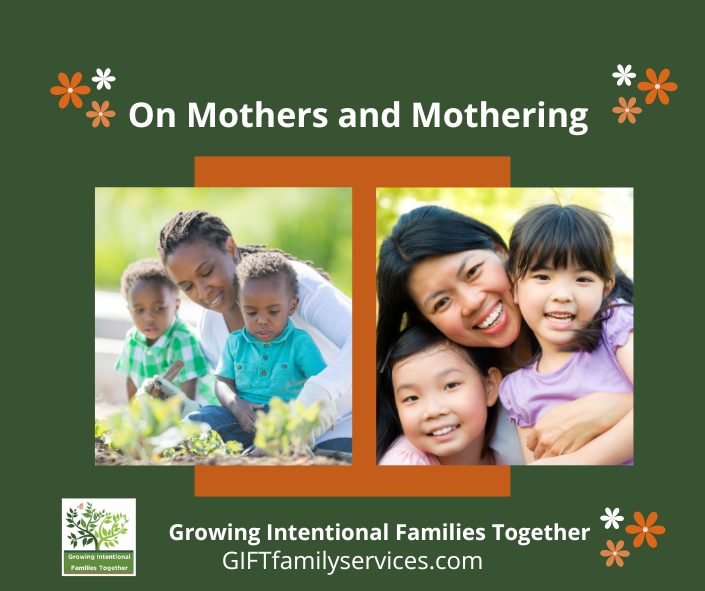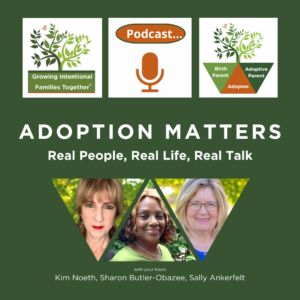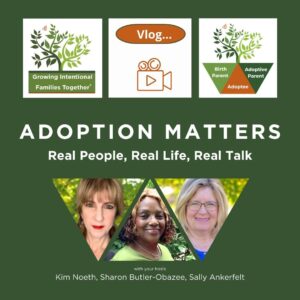
May conjures images of spring flowers, of growth and renewal, of hope and expectation. Yet for those of us connected by adoption, May is also a month fraught with emotions. Mother’s Day is the defining event of the month. Social media, television, and advertisements overflow with mentions of Mother’s Day and mothers. However, for us motherhood is steeped in ambiguity. For some, Mother’s Day evokes joy, pride, and pleasure. For others, it awakens grief, heartache, regret, and sometimes, despair.
A painful reality is at the origination of every adoption: before the adoptive family can form, a birth family must be fractured. The echoes of this relationship realignment reverberate throughout the lifetimes of all involved. A push-pull of co-existing emotions exists: joy and grief, gain and loss.
As intentional parents, we can help make this complicated emotional web easier or harder for our children, ourselves, and their birth families.
Who is real?
We often discuss the role language plays in framing our relationships, especially family relationships. Adoptive parents yearn to be seen as genuine parents—as real. Society typically identifies the birth parents as the real parents. But this hair-splitting is not productive. We are all real and we are all joined in our common love for the child who brought us together.
Our kids can never have too many people loving them
We can ease some of our children’s stress by not requiring them to surrender their connection to and interest in their birth families. Instead, we can validate the appropriateness of their interest and encourage dialog. Research has proven that this approach strengthens the connection between children and their adoptive parents.
On the other hand, demanding exclusive emotional loyalty to us (adoptive parents ) hurts our kids. And, it is only enforceable at the surface. Parents cannot control children’s thoughts or emotions. When it is taboo to talk about birth parents and/or the hard aspects of adoption, children still think about them—a lot. Their silence is only on the surface. On the inside, they most likely wrestle with complicated thoughts and emotions. Sadly, when the difficult thoughts and feelings are taboo to voice in their homes are left to process their experiences without the parental support they need.
Are You My Mother?
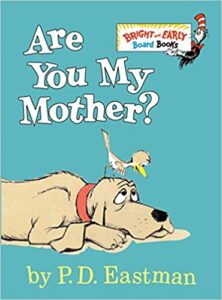 Having a book read to them while sitting nestled in a beloved adult’s lap is a common feature in most young children’s lives. The power of a book goes far beyond simply hearing the spoken word. Consider the now-classic children’s book titled “Are You My Mother?” written twenty-five years ago by P. D. Eastman. It tells the story of a baby bird who searches for his absent mother. He asks a hen, a dog, a cow, and several others if they are his mother. All reply that they are not. Baby bird remains distressed. Finally, the mother bird returns to the nest with a fat worm to feed her newly hatched baby.
Having a book read to them while sitting nestled in a beloved adult’s lap is a common feature in most young children’s lives. The power of a book goes far beyond simply hearing the spoken word. Consider the now-classic children’s book titled “Are You My Mother?” written twenty-five years ago by P. D. Eastman. It tells the story of a baby bird who searches for his absent mother. He asks a hen, a dog, a cow, and several others if they are his mother. All reply that they are not. Baby bird remains distressed. Finally, the mother bird returns to the nest with a fat worm to feed her newly hatched baby.
At least four lessons can be gleaned from its text.
- Children yearn for a missing mother.
- Mothers can be counted on.
- The mother who gives birth to a child will always have a unique and significant place in their child’s heart and mind.
- The responses that a book may evoke from our children can hold powerful and heavy emotional weight. Be curious and supportive about what they are thinking and feeling.
Mother can be both a noun and a verb
Adopted children, like all other children have a mother who gave birth to them. They also have an adopted mother who loves, nurtures, and raises them. Some adopted children also have foster mothers who have a significant impact in their lives and on their hearts. Mothering is nurturing in actioin.
It is a blessing to be loved by many
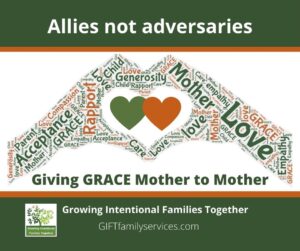 Please also read this blog Offering GRACE Mother to Mother on Mother’s Day from last year.
Please also read this blog Offering GRACE Mother to Mother on Mother’s Day from last year.
We need not let fear, self-doubt, or possessiveness close our hearts and minds to the importance that birth mothers and first families have for our children. We can be emotional allies joined by the love for the child we both love.
If we take an adversarial stance we place our children in the middle of an emotional tug of war, one which causes pain to everyone involved. On the other hand, when we can create an emotionally expansive and inclusive point of view we do not pressure our children to make the impossible choice of choosing one set of parents over another. Similar to families experiencing divorce, we recognize that is a choice we would never require them to make. That is love in action.
Connection versus contact
Even if it is not always easy or comfortable, it is vital to nurture the connection to our children’s birth families. In the cases where it is genuinely unsafe for there to be physical contact, adoptive parents can still sustain emotional openness.
Also, parents will want to remember that circumstances can change. Contact may not always be unsafe; over time, a struggling birth parent can triumph over their limitations and challenges. For our children’s sake, to stay open to the possibility that reconnection may be possible in the future. Also, if contact with a birth parent is unsafe, it may be possible to find alternative ways to connect with other birth relatives who are safe.
 For more on this complex topic, read Lori Holden’s blog:
For more on this complex topic, read Lori Holden’s blog:
Open Adoption Grid: Adding A Dimension To The Open Adoption Spectrum
Listen to our podcast or watch the conversation.
Our previous podcast is available on our website and your favorite podcast platform.
Listen to our podcast and …
Read these award-winning books
written by our coaches.

